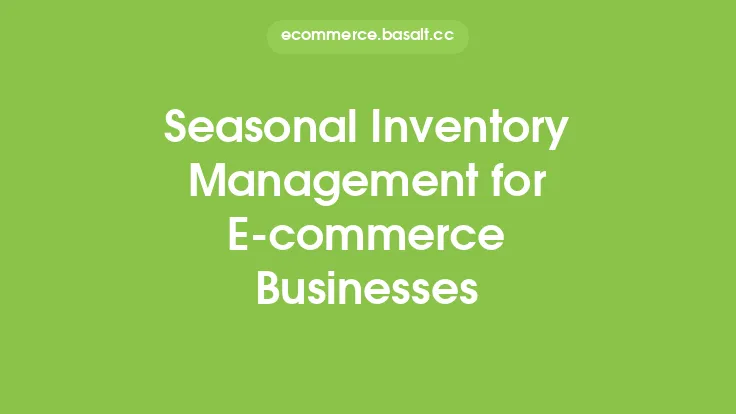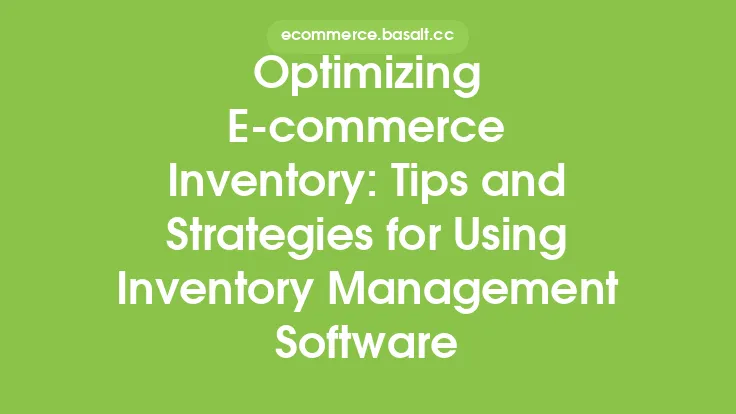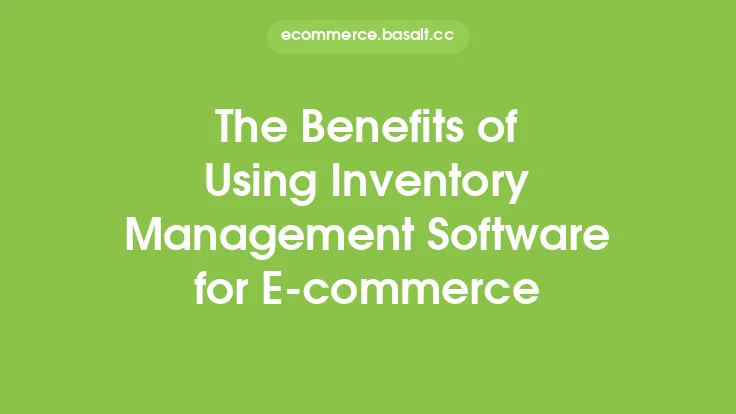In today's fast-paced and highly competitive e-commerce landscape, managing supply chain risks is crucial for businesses to maintain their reputation, customer satisfaction, and ultimately, their bottom line. Supply chain risks can arise from various sources, including natural disasters, supplier insolvency, logistics disruptions, and cyber attacks, among others. Effective supply chain risk management strategies are essential to mitigate these risks and ensure the smooth operation of e-commerce businesses.
Identifying Supply Chain Risks
The first step in developing effective supply chain risk management strategies is to identify potential risks. This involves conducting a thorough analysis of the entire supply chain, from raw material sourcing to delivery to the end customer. E-commerce businesses should consider various risk factors, including supplier reliability, logistics and transportation risks, inventory management risks, and regulatory compliance risks. By identifying potential risks, businesses can prioritize their risk management efforts and develop targeted strategies to mitigate these risks.
Assessing Supply Chain Risk Impact
Once potential risks have been identified, e-commerce businesses should assess the potential impact of each risk on their operations. This involves evaluating the likelihood and potential consequences of each risk, as well as the potential financial and reputational damage. By assessing the potential impact of each risk, businesses can prioritize their risk management efforts and allocate resources effectively. For example, a business may determine that a particular supplier poses a high risk of insolvency, and therefore, develop a contingency plan to mitigate this risk.
Developing Risk Mitigation Strategies
Effective supply chain risk management involves developing targeted strategies to mitigate identified risks. This may involve diversifying suppliers, developing contingency plans, and implementing risk-reducing measures such as insurance and hedging. E-commerce businesses should also consider implementing supply chain visibility and monitoring systems to quickly detect and respond to potential risks. By developing risk mitigation strategies, businesses can reduce the likelihood and impact of supply chain disruptions and maintain customer satisfaction.
Implementing Supply Chain Risk Management Processes
Implementing effective supply chain risk management processes is critical to ensuring the smooth operation of e-commerce businesses. This involves establishing clear risk management policies and procedures, as well as providing training to employees on risk management best practices. E-commerce businesses should also establish a risk management team to oversee risk management efforts and ensure that risk mitigation strategies are implemented effectively. By implementing supply chain risk management processes, businesses can ensure that risk management is integrated into all aspects of their operations.
Monitoring and Reviewing Supply Chain Risks
Effective supply chain risk management involves continuously monitoring and reviewing potential risks. This involves regularly assessing the supply chain for new risks and evaluating the effectiveness of risk mitigation strategies. E-commerce businesses should also conduct regular audits and reviews to ensure that risk management processes are operating effectively. By monitoring and reviewing supply chain risks, businesses can quickly respond to changing risk profiles and maintain their competitive edge.
Building Supply Chain Resilience
Building supply chain resilience is critical to ensuring that e-commerce businesses can quickly recover from supply chain disruptions. This involves developing flexible and adaptable supply chain systems, as well as implementing business continuity planning. E-commerce businesses should also consider developing strategic partnerships with suppliers and logistics providers to enhance supply chain resilience. By building supply chain resilience, businesses can minimize the impact of supply chain disruptions and maintain customer satisfaction.
Leveraging Technology for Supply Chain Risk Management
Technology plays a critical role in effective supply chain risk management. E-commerce businesses can leverage technologies such as predictive analytics, artificial intelligence, and blockchain to identify and mitigate potential risks. These technologies can provide real-time visibility into supply chain operations, enabling businesses to quickly detect and respond to potential risks. By leveraging technology, businesses can enhance their supply chain risk management capabilities and maintain their competitive edge.
Collaborating with Suppliers and Partners
Collaborating with suppliers and partners is essential for effective supply chain risk management. E-commerce businesses should work closely with their suppliers to identify and mitigate potential risks, as well as develop contingency plans in the event of a supply chain disruption. By collaborating with suppliers and partners, businesses can enhance supply chain resilience and minimize the impact of supply chain disruptions. This involves establishing clear communication channels, as well as providing training to suppliers on risk management best practices.
Maintaining Supply Chain Visibility
Maintaining supply chain visibility is critical to effective supply chain risk management. E-commerce businesses should have real-time visibility into their supply chain operations, enabling them to quickly detect and respond to potential risks. This involves implementing supply chain visibility and monitoring systems, as well as leveraging technologies such as GPS tracking and RFID. By maintaining supply chain visibility, businesses can enhance their supply chain risk management capabilities and maintain customer satisfaction.
Conclusion
Effective supply chain risk management is essential for e-commerce businesses to maintain their reputation, customer satisfaction, and ultimately, their bottom line. By identifying potential risks, assessing risk impact, developing risk mitigation strategies, implementing risk management processes, monitoring and reviewing risks, building supply chain resilience, leveraging technology, collaborating with suppliers and partners, and maintaining supply chain visibility, businesses can minimize the impact of supply chain disruptions and maintain their competitive edge. By prioritizing supply chain risk management, e-commerce businesses can ensure the smooth operation of their supply chain and achieve long-term success.





